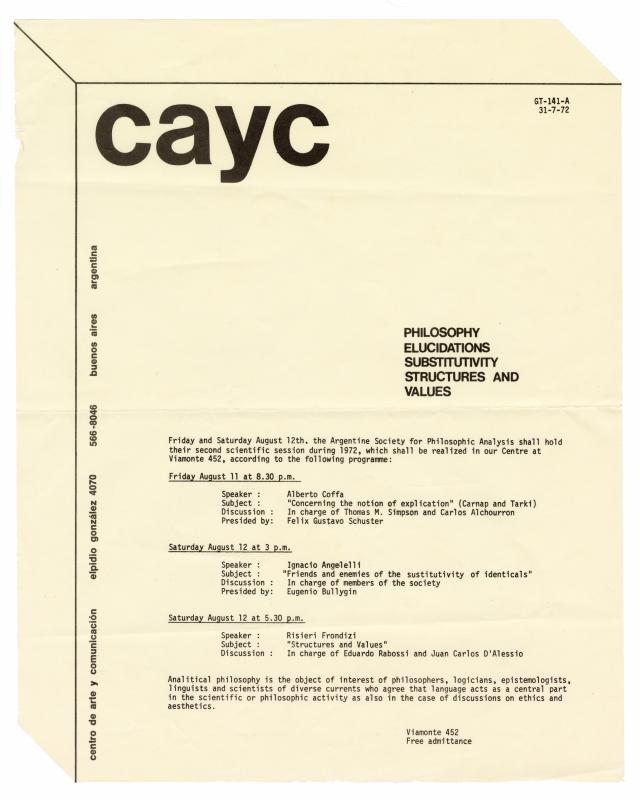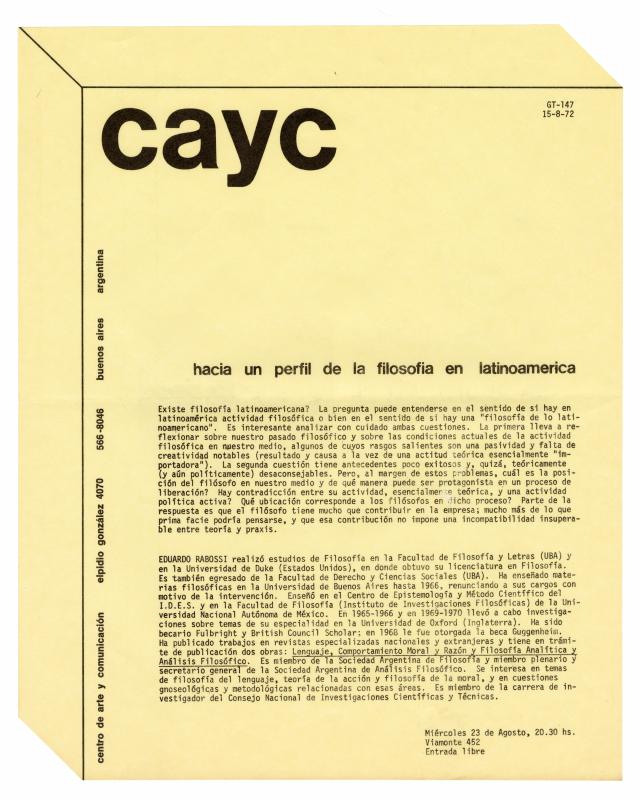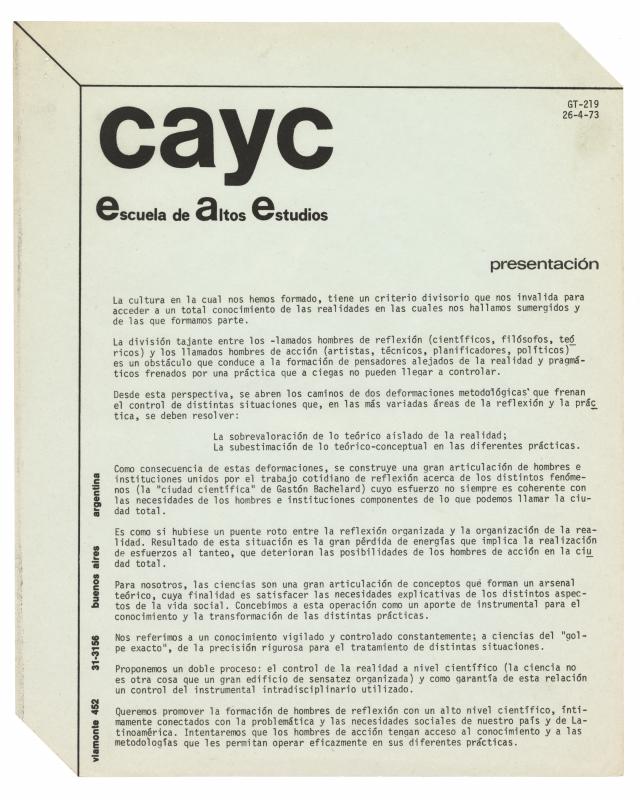Ever since it was founded, the CAYC (Centro de Arte y Comunicación), helmed by the cultural promoter, artist, and businessman Jorge Glusberg, was intended as an interdisciplinary space where an experimental art movement could flourish. The establishment of collaborative networks connecting local and international artists and critics played an important role in this process. In addition to the exhibitions, a program of different activities exposed attendees to the latest in art and scientific thinking. According to Glusberg, the coordination between theoretical thinking and artistic practice was an essential part of social change.
During the military dictatorship of General Juan Carlos Onganía, the CAYC became a cultural home for the Fundación de Investigación Interdisciplinaria (Foundation for Interdisciplinary Research), a space that welcomed a group of dissident professors from the Facultad de Arquitectura y Ciencias Exactas de la Universidad de Buenos Aires after the military takeover of the university in what came to be known as “La Noche de los Bastones Largos” in June 1966. In its early years the center organized a variety of activities with intellectuals that contributed to the circulation of ideas from different disciplines (analytical philosophy, mathematical logic, epistemological problems, psychology, semiotics, and linguistics), which had been excluded from official circles.
The center’s interest led to the creation of the Escuela de Altos Estudios (EAE, the School of Advanced Studies) in early 1973. Though gatherings of this kind had happened before—some of them were associated with the Sociedad Argentina de Análisis Filosófico (SADAF) (GT-141; doc. no. 1478780, GT-141-A; doc. no. 1478781, GT-147; doc. no. 1478783, GT-120 [la lógica y el método hipotético deductivo]; doc. no. 1478803) the EAE created a formal space that included academics and intellectuals where ideas could be shared.
The objectives described in the relevant newsletters (GT-201; doc. no. 1478752, GT-201-A; doc. no. 1478753, GT-224; doc. no. 1478771, GT-219; doc. no. 1478755) were apparent in the activities organized by the EAE (some of which were more technical than interdisciplinary), as well as in the art produced by artists associated with the center. This initiative was an expression of the mood of openness of the “Cultural Spring” that flowered during the brief democratic presidency of Héctor J. Cámpora, which lasted forty-nine days in 1973. It was seen as putting an end to a seven-year period of military dictatorships (first under Onganía, then Levingston, and then Lanusse), after Perón had been in exile for eighteen years.
The Sociedad Argentina de Análisis Filosófico (SADAF) was one of the associations that welcomed university professors who had resigned their positions after the military takeover of universities. Following the model of the American Philosophical Society (APS), the SADAF set out to organize groups and events devoted to discussion and the exposure of philosophical analysis. The original members of the society were Eugenio Bulygin, Genaro Carrió, Alberto Coffa, Juan Carlos D’Alessio, Rolando García, Ricardo Gómez, Gregorio Klimovsky (1922–2009), Raúl Orayen (1943–2003), Eduardo Rabossi, Félix Schuster, and Thomas Moro Simpson.





